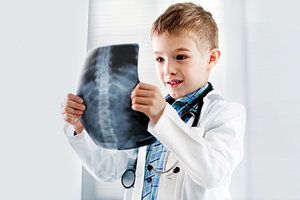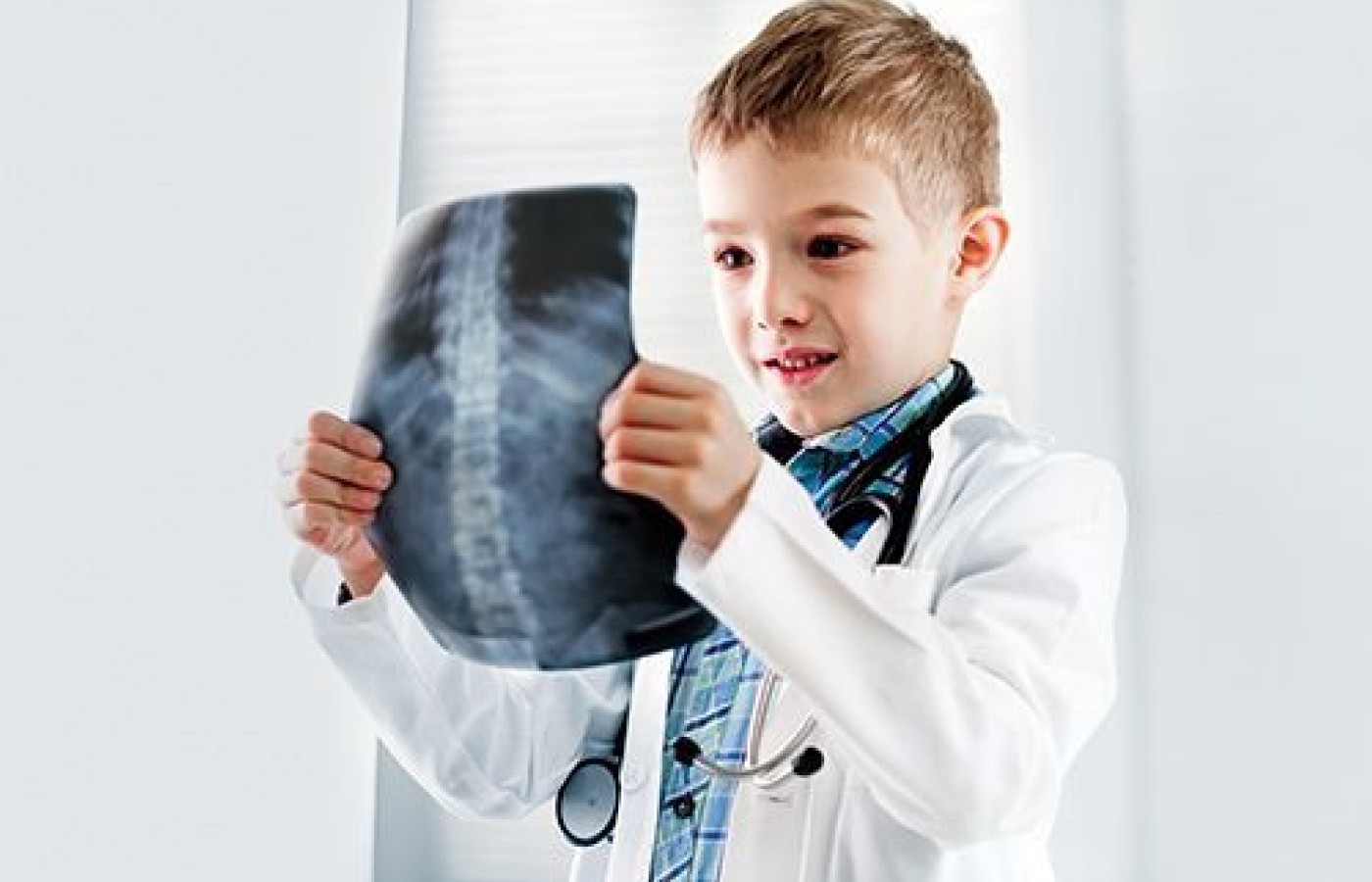Some doctors thrive in a personality-based clinic and have a loyal following no matter what services or equipment they offer, but for most chiropractic offices who are trying to grow and expand, new equipment purchases help us stay relevant and continue to service our client base in the best, most up-to-date manner possible. So, regarding equipment purchasing: should you lease, get a bank loan, or pay cash?
A Spinal Cord Injury That Can Be Hard to Spot
Spinal cord injury without radiographic abnormality (SCIWORA) is an injury to the spinal cord following a physically traumatic event with no radiographic evidence of injury to the spinal column.1 The condition is generally unique to children under the age of 8.7 Spinal cord injury without neuroimaging abnormality also implies MRI and /or CT imaging was utilized in the examination workup.9
Adult variations occur, but this article is directed at the childhood version of SCIWORA for the purposes of alerting the chiropractic physician to the possibility of a pediatric patient presenting to the physician's office for seemingly typical post-MVA injuries when a more significant and serious injury exists.
Why SCIWORA Is Often Missed by Physicians
Thousands of children are involved in motor-vehicle accidents every year in the United States. In fact, MVAs account for the No. 1 cause of mortality for children ages 5-19.2 Children are often examined at an emergency room following an accident due to symptoms expressed by the child or out of general concern by the parent for their child's well-being. Like adults, children involved in car accidents may not demonstrate symptomatology initially, although they have injuries requiring treatment.
A visit to the emergency room does not guarantee a radiographic workup, even in traumatic injury cases. In fact, the NEXUS (National Emergency X-Radiation Utilization Study) protocols may direct emergency-room physicians to examine and release patients from the ER without any radiographic examination.3

NEXUS protocols for radiological workup following a motor-vehicle accident are indicated if there is posterior midline cervical tenderness; evidence of intoxication; the patient is not alert and oriented to person, place, time and event; focal neurological deficit upon examination; or a painful, distracting injury (e.g., long bone fracture).
Additionally, if the C7-T1 vertebral interface is not clearly visible on the lateral cervical neutral view (if imaging of the cervical spine were performed), then a swimmer's view is also recommended.4
Chiropractic physicians are often the first to provide the initial examination of children involved in motor-vehicle accidents if the child was not transported to the ER immediately following the collision. Changes in our health care system and insurance laws of late increasingly cause an overload of emergency rooms and staff. The net result may be that more families turn to a chiropractic provider due to the ease of accessibility or an increased understanding of the success chiropractic physicians have with the treatment of automobile accident-related injuries.5
Variables That Complicate Proper Diagnosis
SCIWORA injury typically follows involvement in a motor-vehicle accident or some other traumatic sports injury. SCIWORA occurs in 20-36 percent of traumatic myelopathy cases reported.6 An alarming presentation of SCIWORA is that the symptomatic expression of the symptomatology may not occur until day four following the motor vehicle accident or traumatic sports-related incident.8
The inherent flexibility of a child / adolescent complicates the diagnosis of SCIWORA. Increased flexibility may in fact add to the likelihood of SCIWORA developing.7 Children often demonstrate fairly normal ranges of motion following collisions, adding to the potential of a physician incorrectly concluding the injuries are minimal when in fact, the opposite may be true.
Children properly seated and secured in an appropriate child car seat relative to their age have added general protection during an automobile collision, but still have the potential to develop SCIWORA.
The pediatric and adolescent population groups can present a challenge at times to examination due to their inability to communicate adequately (or at all, in the case of the very young). In slightly older children, fear of the doctor and overall apprehension at being in the clinic may limit the child's desire to accurately describe their symptoms.
What's more, the accident / traumatic event alone can be a harrowing experience for young and old alike. Compassion and patience are needed to make the patient comfortable enough to draw out the important details of how they feel.
SCIWORA and Transient Focal Neurological Episodes
The key to diagnosing SCIWORA, like many conditions, is a proper history. A unique feature of SCIWORA is the development of a transient focal neurological episode (TFNE) that may be noticed by the parents or expressed by the child following the collision or in the first few days after the accident. Transient focal neurological episodes are "impairments of nerve, spinal cord or brain function that affect a specific region of the body, e.g. weakness in the left arm, the right leg, paresis or plegia."10
The signs of TFNE are categorized by the localization of the impaired central nervous system component. The entire list is extensive and a review of signs associated with TFNE is available online.10
TFNEs commonly seen in MVA patients include, but are not limited to, the following: ataxia, unilateral anosmia, tinnitus, memory problems, nystagmus, impairment of tactile sensation, positive cranial nerve examination findings, hypoesthesia, and muscle weakness.10 Some expressions of transient neurological symptoms may be dramatic, lasting several hours; others are fleeting, lasting only several seconds. Any of these symptoms may be the important telling sign of a possible serious underlying neurological condition such as SCIWORA.
If you are aware that the patient has experienced a TFNE and can demonstrate only mild losses of flexion and extension of the cervical and lumbar spine, then dynamic X-ray testing should be performed to rule out segmental hypermobility that may be highly indicative of SCIWORA. If segmental hypermobility is identified, referral for an MRI scan of the region to evaluate for cord compromise is recommended.2 If SCIWORA is discovered, prompt referral to a medical specialist dealing in pediatric neurological conditions or to the hospital ER is warranted.2
Dynamic X-ray testing is a simple procedure that can be performed in any chiropractic office with plain-film radiological capabilities. If your office doesn't have plain-film X-ray, a referral to a radiologist or fellow chiropractor should be made to adequately differentially diagnose the problem.11
Knowledge Is Power
Physicians are likely to see the SCIWORA patient who has the more latent symptomatic presentation. A proper examination and detailed history are paramount to determining the nature of the patient's transient neurological symptoms. The physician should determine if the patient has experienced a neurological focal event.
New pediatric patients seen by chiropractors within days of the date of injury deserve our understanding of the possibility of latent findings consistent with SCIWORA. Quick action and immediate referral should be taken to prevent further deterioration of the patient's health through proper advanced imaging and treatment. A thorough understanding of SCIWORA is paramount to the personal-injury practice and caring for our youngest patients.
References
- Spinal cord injury without radiographic abnormality. Wikipedia: https://en.wikipedia.org/wiki/Spinal_cord_injury_without_radiographic_abnormality
- CDC Childhood Injury Report. Centers for Disease Control and Prevention, National Center for Injury Prevention and Control, Division of Unintentional Injury Prevention. www.cdc.gov/safechild/Child_Injury_Data.html
- Hoffman JR, Wolfson AB, Todd K, Mower WR. Selective cervical spine radiography in blunt trauma: methodology of the National Emergency X-Radiography Utilization Study (NEXUS). Ann Emerg Med, 1998 Oct,32(14):461-9.
- Clearing the Cervical Spine. https://en.wikipedia.org/wiki/Clearing_the_cervical_spine#cite_ref-1
- Khan S, Cook J, Gargan M, Bannister G. Symptomatic classification of whiplash injury and the implications for treatment. J Orthoped Med, 1999;21(1):22-24.
- McCall T, et al. Cervical spine trauma in children: a review, identifying SCIWORA. Neurosurg Focus, 2006;20(2):E5.
- Wheeless CR. Radiology of the Pediatric Cervical Spine: www.wheelessonline.com/ortho/pediatric_c_spine
- Pang D, et al. Spinal cord injury without radiographic abnormalities in children. J Neurosurg, 1982;57(1):114.
- Spinal Cord Injury Without Radiologic Abnormality (SCIWORA). OrthopaedicsOne.com: www.orthopaedicsone.com/x/LYOmAQ
- Focal Neurological Sign, Wikipedia: https://en.wikipedia.org/wiki/Focal_neurologic_signs
- Freiheit T. "Diagnose Sprain Injuries in MVA Cases With Dynamic X-Rays." Dynamic Chiropractic, Nov. 15, 2015.



